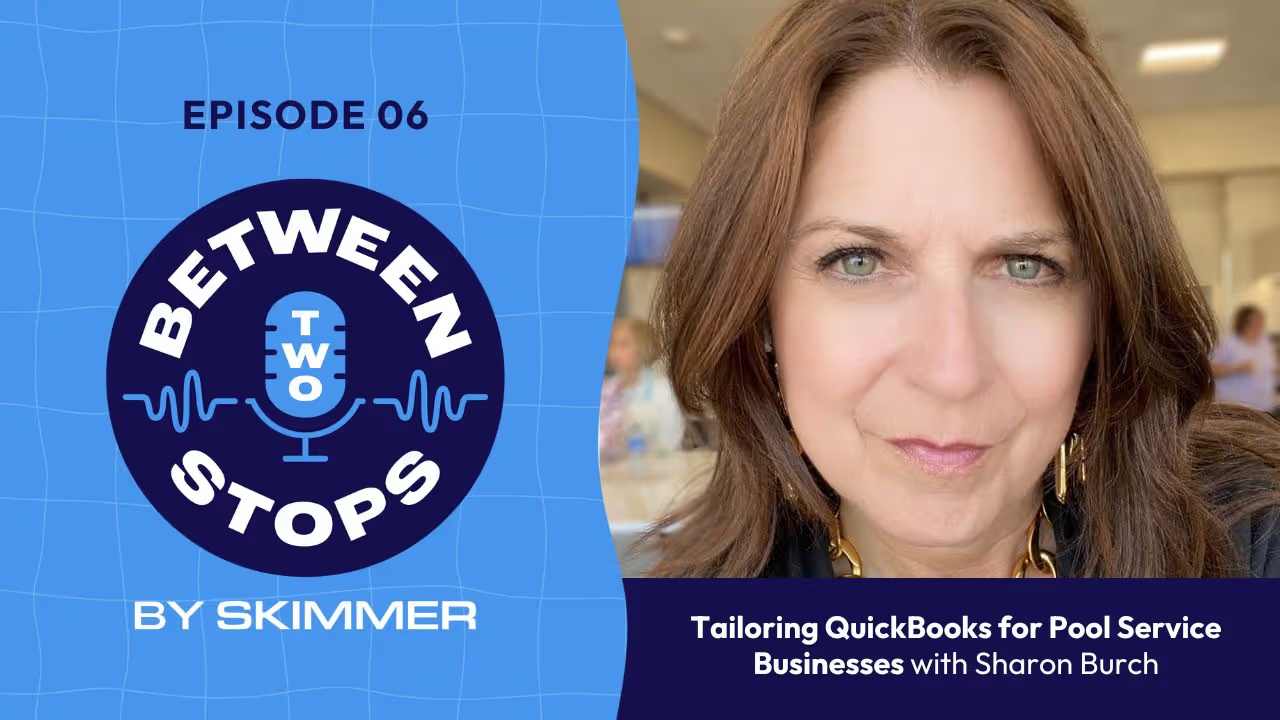
QuickBooks is an essential tool—and an industry leader—for anyone running their own business. But as Sharon Burch will tell you, it’s a “unique beast” for pool business owners. That’s because the key to getting QuickBooks to work for any pool business is also the hardest thing to master: setting it up for a pool business.
Sharon is no stranger to the struggle. She experienced it firsthand when she became the co-owner of a pool business. Though she’s always been a systems pro who was already familiar with the ins and outs of QuickBooks, “One of the big things I had issues with was how to set it up so that I could see the things I needed to see,” she says, including a full financial picture of the business.
By finding her way out of that confusion on her own, she inadvertently became a leader in the QuickBooks for Pool Businesses space. Today, most of her time is dedicated to teaching pool pros how to set up QuickBooks in a way that helps them truly understand and leverage their business’s financials.
Her biggest message for all pool pros is that it’s never too late to turn QuickBooks into a superpower. In this podcast episode, she talked about how pool pros can do it.
Superpower #1: Get the highest value when you sell your business
One of the unique things about owning a pool business is that, when you’re ready to retire or move on, you can sell it to someone else. In order to do that, you need to be able to prove that you’re running a profitable business in the first place. This is where many pool pros struggle.
It all comes down to keeping accurate financial reports. When you’re getting ready to sell your business, you should be able to provide profit and loss (P&L) statements for the service and repair sides of the business. You should also know your chemical sales and your owner add-backs.
Most people don’t track these things, and as a result, they can’t properly show the day-to-day value of their company. When things like one-time expenses are lumped in with everything else, you never get a clear picture of how your business is doing, and will never sell your business for its true value.
The good news is that when you set up your transactions properly, you’ll always be ready to show the true value of your company. It’s as easy as setting up the “Class” function in QuickBooks Online Plus, which allows you to see P&L with every transaction coming in and out.
When each transaction is assigned to its own class, you can easily pull aside one-time expenses that are not part of your business’s normal operations. As Sharon says, it’s never too early to have that information ready. If you continuously track that information, you’ll save yourself the headache of having to put everything together when you’re trying to sell.
Superpower #2: Understand your own business like the back of your hand
Of course, setting yourself up for success when you sell is important, but QuickBooks can also help you run your business as well as possible in the years that come before that moment.
According to Sharon, your QuickBooks should be set up so that you can produce any of the following statements at any time:
- A balance sheet, which shows the true value of what you owe people, what they owe you, your cash, and your fixed assets.
- A P&L statement, which shows your bottom line after receiving and spending money throughout the month.
- A cash flow statement, which shows how much cash is actually coming into the business on a regular basis.
Beyond these three statements, there are also a number of specialty reports you can pull from QuickBook that are specific to the pool business:
- A pool route P&L: This shows you, route by route, whether you’re paying too much for chemicals or not charging enough for the work being done. In other words, it shows you where your profitability might be hurting and why.
- Customized reports of P&L: You can pull these for the pool service, repair, construction, or remodelling parts of your business to see how each area is doing and whether it might need adjustments.
- Customized reports for income and expenses: When everything is organized and categorized, you can easily generate specific reports for things like pool cleaning income, repair income, chemical sales income, sale of parts used for repair income, expenses for cost of chemicals sold, or cost of parts for repair and maintenance sold.
Being able to zoom in on a specific part of your business is a great way to get to know your margins. And when you know your margins well, you can forecast for the future better. You can also easily export your QuickBooks data into a spreadsheet and build dashboards around it to see trends over time.
It’s never too late to turn QuickBooks into your business’s superpower
While January is the best time to start organizing your income and expenses, this is also something you can pick up at any time throughout the year. It may feel like a lot of work, but the rewards you’ll reap, both now and later, will make it all worth it.
If you want to learn more about setting up QuickBooks for pool businesses, watch our webinar with Sharon or visit her website.
Plus, make sure you check out our full conversation with Sharon on the Between Two Stops podcast!

















